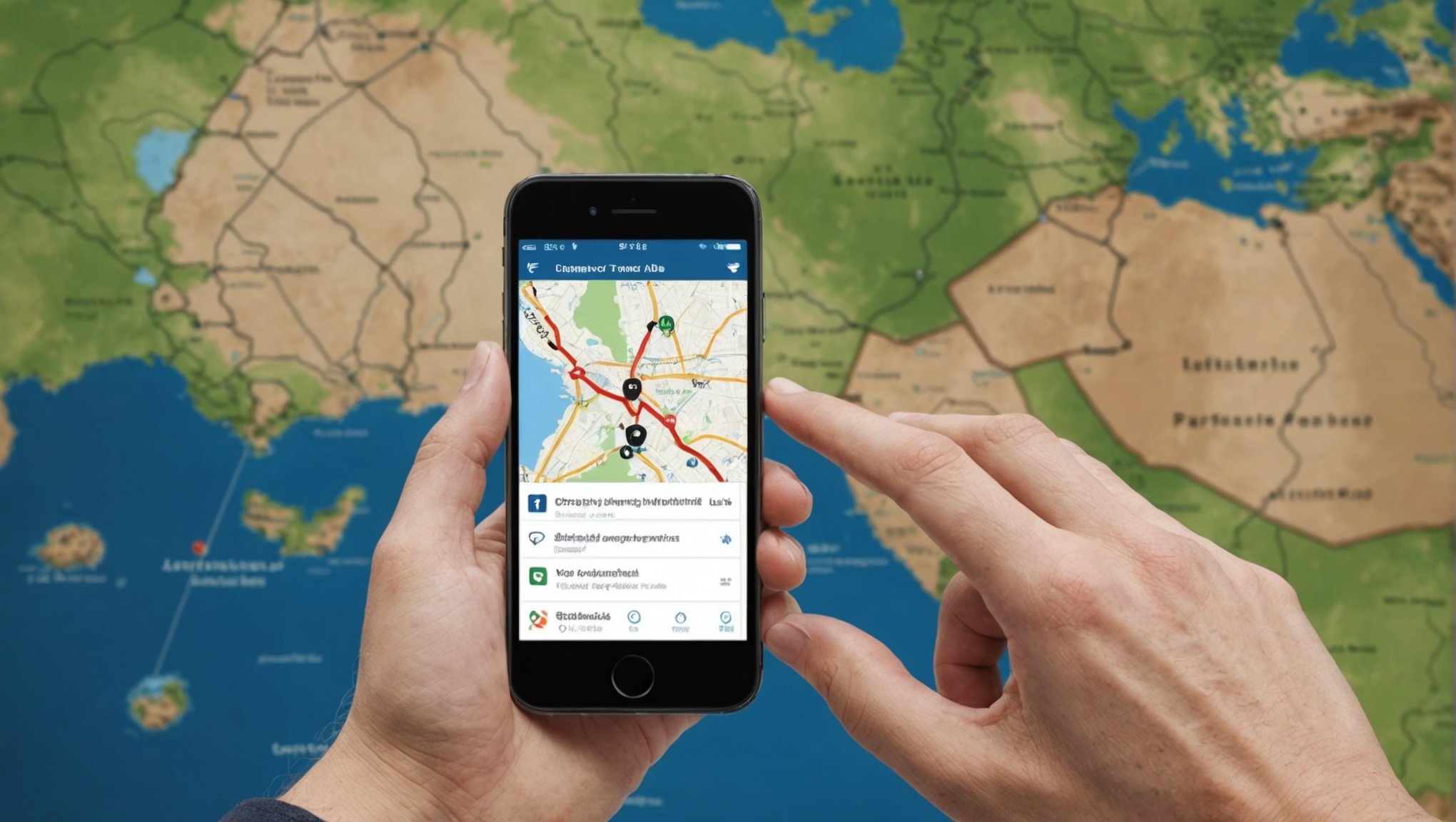Travel planning can often feel overwhelming. Crafting interactive itineraries with your smartphone can simplify this process. Imagine creating detailed, engaging travel plans that are easy to share with friends and family. This innovative approach not only enhances your travel experience but also fosters collaboration and excitement among your travel companions. Discover how to elevate your travel planning game and make every journey memorable with cutting-edge tools at your fingertips.
Understanding Interactive Itineraries
Interactive itineraries are a modern approach to travel planning that integrates dynamic elements into traditional travel schedules. Unlike static itineraries, these allow travellers to engage with their plans, offering flexibility and real-time updates. The primary benefit of interactive itineraries is their adaptability, allowing users to modify plans on the go, which is particularly useful in unpredictable travel situations.
Have you seen this : Maximize Your Smart Home: A Guide to Tracking Solar Panel Energy Production with Your Smartphone
Visual elements play a crucial role in the design of interactive itineraries. Maps, images, and timelines enhance user experience by providing a clear and engaging overview of the travel plan. These elements make it easier for travellers to visualize their journey, understand logistics, and anticipate upcoming activities.
Moreover, interactive itineraries significantly enhance the travel experience by offering personalized recommendations and seamless integration with other digital tools. For example, they can sync with calendars, provide location-based suggestions, and even offer language translations. This level of personalization ensures that travellers have access to curated experiences tailored to their preferences, making travel more enjoyable and less stressful.
Have you seen this : Mastering Smart Home Lighting: A Complete Guide to Voice Command Setup and Management
In summary, interactive itineraries are revolutionizing travel planning by combining technology with user-centric design, offering a more intuitive and efficient way to organize and experience travel.
Essential Features of a Good Itinerary
An effective itinerary is a cornerstone of successful travel organization. It should encompass several key components to ensure a seamless travel experience. At its core, a good itinerary includes detailed information about accommodation, transportation, and activities. This ensures travellers have a comprehensive understanding of their journey.
A user-friendly layout is vital. It should feature clear design elements that make navigation intuitive. Itinerary features like maps and timelines are essential, as they offer a visual representation of the trip, aiding in quick comprehension and planning. Additionally, the inclusion of contact information and emergency details ensures preparedness for unforeseen circumstances.
Incorporating real-time updates is crucial for modern itineraries. This feature allows travellers to receive the latest information about flight changes, weather conditions, or local events. Accessibility is another important aspect, ensuring the itinerary can be easily accessed on various devices. This flexibility allows users to modify plans as needed, enhancing the overall travel experience.
Ultimately, a well-crafted itinerary acts as a reliable guide, providing structure while allowing for spontaneity. By focusing on these essential features, travellers can enjoy a more organized and stress-free journey.
Top Apps for Creating Interactive Itineraries
In the realm of travel planning apps, several standout options cater to diverse travel needs. These itinerary tools offer a variety of features that enhance the planning process and improve the travel experience.
Popular apps like TripIt, Roadtrippers, and Sygic Travel provide robust platforms for creating and managing interactive itineraries. TripIt excels in organizing travel documents and syncing with calendars, making it ideal for business travellers. Roadtrippers is perfect for road trip enthusiasts, offering route planning and unique stop suggestions. Sygic Travel shines with its offline maps and detailed city guides, catering to international travellers.
When comparing these itinerary tools, user experience varies significantly. TripIt is praised for its simplicity and efficiency, while Roadtrippers is noted for its engaging interface and community-driven content. Sygic Travel offers a visually rich experience with extensive multimedia content.
For those seeking recommendations based on different travel styles, consider the following:
- Business travel: TripIt for its organizational capabilities.
- Adventure travel: Roadtrippers for its detailed route planning.
- Cultural exploration: Sygic Travel for its comprehensive guides.
Each app brings unique strengths, allowing travellers to select the best tool based on their specific needs and preferences.
Step-by-Step Guide to Crafting an Itinerary
Creating a well-structured itinerary is fundamental to successful travel planning. This travel planning guide will help you navigate the process of itinerary creation with ease.
Begin with initial research to identify your destinations, activities, and accommodation options. Understanding the local culture and attractions can enrich your travel experience. Use reliable sources to gather information on must-see sights and top-rated accommodations. This foundational step ensures you have a clear vision of your journey.
Once your research is complete, focus on structuring the itinerary. Organise your travel days with a balanced mix of activities and relaxation. Allocate specific time slots for each activity, considering travel time and potential delays. This approach aids in effective time management, allowing you to maximise your travel experience.
To enhance your itinerary, incorporate tips for refining and personalizing it. Tailor your plans to suit your interests, whether they involve culinary experiences, historical tours, or outdoor adventures. Consider adding buffer times to accommodate spontaneous detours or unexpected events. Personalisation ensures your journey aligns with your preferences, making it more enjoyable and memorable.
By following these steps, you can craft an itinerary that is both comprehensive and adaptable.
Enhancing Itineraries with Multimedia Elements
Incorporating multimedia itineraries can significantly enrich the travel planning experience. By integrating travel visuals such as images and videos, travellers gain a vivid preview of their destinations. These elements provide a more immersive understanding of what to expect, allowing travellers to make more informed decisions about their journey.
Maps and location-based services are crucial components of multimedia itineraries. They offer real-time navigation and location-specific information, enhancing the travel experience by ensuring travellers are always oriented and informed. These tools not only assist in planning routes but also in discovering nearby attractions and services.
Interactive elements like links and QR codes serve as gateways to additional information and services. By embedding these features within itineraries, travellers can easily access detailed guides, booking services, or even local dining options. This seamless integration of technology ensures that all necessary information is readily available at the traveller's fingertips.
The use of multimedia elements transforms traditional itineraries into dynamic and engaging travel companions. By leveraging travel visuals and interactive features, travellers can enjoy a more personalized and enriched travel experience, ensuring their journey is both memorable and well-organized.
Sharing Your Itinerary with Friends and Family
Sharing your itinerary with friends and family can significantly enhance your travel experience through collaboration and support. Leveraging digital tools for itinerary sharing ensures that everyone involved is on the same page, facilitating smoother communication and coordination.
Best Practices for Sharing Itineraries Digitally
When sharing itineraries, consider using platforms that offer real-time updates and easy access. Email and cloud storage services like Google Drive or Dropbox are popular choices, allowing for quick sharing and editing. Ensure the document is formatted clearly for easy understanding.
Tools for Collaborative Travel Planning
Several apps and services are designed for collaborative travel planning. Tools like Google Maps allow you to share routes, while apps like TripIt enable shared access to travel plans. These platforms often include features for adding comments or suggestions, making it easier to coordinate with travel companions.
Ensuring Privacy and Access Control
While sharing your itinerary, it's crucial to maintain privacy and control over who can access your plans. Use password-protected files or services that allow you to set permissions, ensuring only intended recipients can view or edit the itinerary. This approach safeguards your travel details while fostering effective collaboration.
Case Studies: Successful Interactive Itineraries
Exploring real-life itinerary examples offers valuable insights into crafting effective travel plans. By examining these travel case studies, we can uncover practical strategies and lessons from seasoned travellers.
Analysis of Effective Itineraries from Various Travellers
A successful itinerary often blends meticulous planning with flexibility. One traveller's journey through Europe highlighted the importance of integrating local experiences. By including cultural events and local dining spots, the traveller enriched their experience beyond typical tourist attractions. This approach demonstrates how personalization can elevate a trip.
Lessons Learned and Tips from Real-Life Examples
Adapting itineraries based on unexpected changes is crucial. A traveller in Asia faced flight delays but used real-time updates to adjust their plans, ensuring minimal disruption. This case underscores the importance of incorporating contingencies and staying informed through digital tools.
Adaptation of Itineraries for Different Destinations
Different destinations require tailored itineraries. For instance, a trip to South America focused on outdoor adventures, necessitating detailed route planning and safety considerations. In contrast, a city break in New York emphasized cultural exploration and efficient use of public transport. These examples highlight the need to adapt plans to suit the unique demands of each destination.
Overcoming Common Travel Planning Challenges
Navigating travel planning challenges can be daunting, but understanding common obstacles can ease the process. One prevalent issue is time constraints. Travellers often struggle to balance planning with daily responsibilities. To combat this, set aside dedicated time slots for itinerary creation. Break tasks into manageable chunks, focusing on one aspect at a time, such as accommodations or activities.
Information overload is another hurdle. With countless sources offering travel advice, it's easy to feel overwhelmed. Prioritise reputable websites and apps, and use itinerary tips to filter essential details. Creating a checklist of priorities can help streamline the planning process, ensuring you don't miss critical information.
Flexibility is vital in travel plans. Unexpected events, like weather changes or transport delays, can disrupt even the best-laid plans. Incorporate buffer times in your itinerary to accommodate such disruptions. This strategy allows for spontaneous adventures and reduces stress if things go awry.
Managing expectations is crucial. Understand that not everything will go as planned. Embrace the unpredictability of travel, and view disruptions as opportunities for new experiences. By adopting a flexible mindset and using practical itinerary tips, you can transform challenges into memorable adventures.
The Future of Travel Planning Technology
The landscape of travel technology is rapidly evolving, driven by emerging trends that promise to revolutionize how we plan our journeys. A significant trend is the integration of AI and machine learning in itinerary creation. These technologies are transforming travel planning by offering personalized recommendations based on user preferences and real-time data analysis.
Role of AI in Itinerary Creation
AI enhances travel planning by automating complex tasks, such as suggesting optimal travel routes and accommodations. It learns from past user behaviour to provide tailored suggestions, ensuring a more personalized travel experience. Machine learning algorithms analyse vast amounts of data to predict travel trends and offer dynamic pricing options, helping travellers make informed decisions.
Predictions for Future Trends
Looking ahead, future trends in travel planning tools will likely focus on further personalization and seamless integration with other digital platforms. We can anticipate the rise of virtual reality (VR) tours, allowing travellers to explore destinations before visiting. Additionally, blockchain technology may play a role in securing and streamlining bookings and payments. As these technologies continue to develop, the travel planning landscape will become more intuitive and efficient, offering travellers unprecedented control and customization over their itineraries.
Resources for Further Learning
For those eager to delve deeper into travel planning, a wealth of travel resources is available to expand your knowledge and skills. Recommended books such as "Vagabonding" by Rolf Potts offer insights into long-term travel strategies, while "The Travel Book" by Lonely Planet provides inspiration for destinations worldwide. Articles from reputable travel magazines and websites, such as National Geographic Traveler, also serve as valuable itinerary learning tools.
Online courses and webinars present excellent opportunities to enhance your travel skills. Platforms like Coursera and Udemy offer courses on topics ranging from budget travel to cultural immersion. These resources provide structured learning experiences, allowing you to gain practical insights and apply them to your travel planning.
Engaging with community forums and social media groups can be incredibly beneficial for sharing experiences and advice. Websites like Reddit have dedicated travel subforums where travellers exchange tips and stories. Facebook groups also connect like-minded individuals who share a passion for exploration. These communities offer real-world insights and personal anecdotes, enriching your understanding of travel planning.
By leveraging these diverse resources, you can continuously refine your travel planning skills and enjoy more enriching travel experiences.










